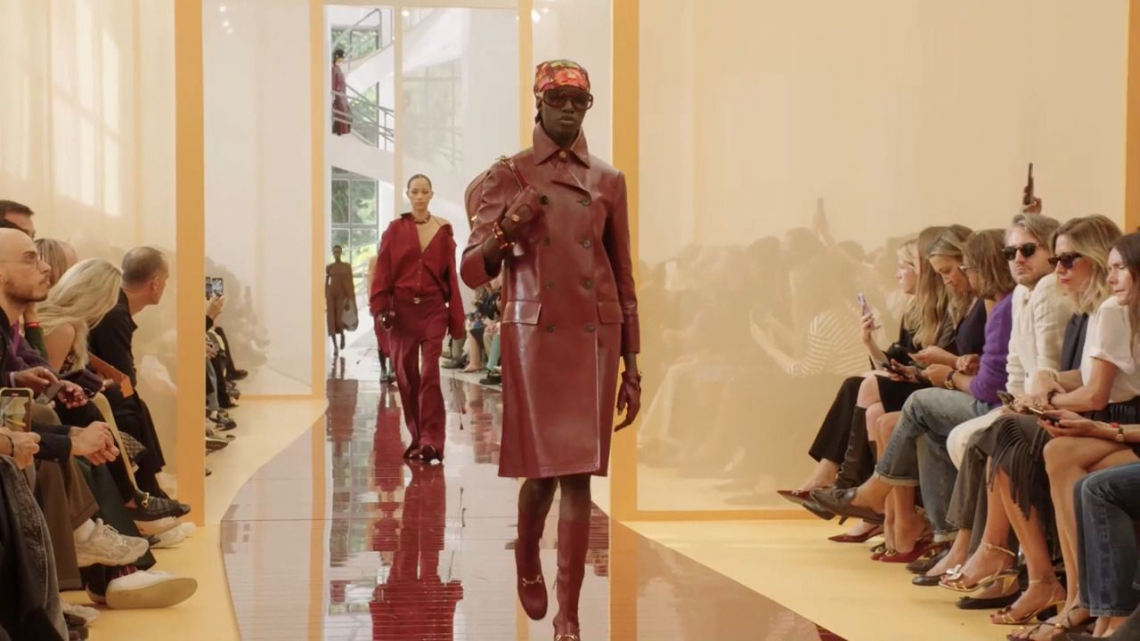Although it’s hard to predict, even in the best of times, the fashion industry is in for a particularly tumultuous and uncertain 2025. A long-feared cyclical slowdown has arrived. Consumers, affected by the recent period of high inflation, are increasingly price sensitive. There is also the surprising rise of dupes, the acceleration of climate change, and the continued reshuffling of global trade. Regional differences, which came into focus in 2024, will become even starker in the coming year. This is what emerges from The State of Fashion, the annual survey carried out by McKinsey & Company & BoF Insights.
Judged purely by the top line, the fashion industry’s outlook for 2025 appears to be a continuation of the sluggishness seen in 2024: revenue growth is expected to stabilize in the low single digits (exhibit). While luxury has led in value creation in recent years, the McKinsey Global Fashion Index forecasts that in 2024 , it is nonluxury that will drive the entirety of the increase in economic profit for the first time since 2010 (excluding the COVID-19 pandemic).
Fashion leaders polled in our annual BoF-McKinsey State of Fashion Executive Survey were just as pessimistic as last year. Just 20 percent expect improvements in consumer sentiment in 2025, while 39 percent see industry conditions worsening.
The geographic drivers of revenue and economic profit are also undergoing historic shifts. In particular, the industry will benefit from falling inflation and increased tourism in Europe, the resilience of high-net-worth individuals in the United States, and new growth engines in Asia (to counteract uncertainty around consumer spending in China, which is still recovering from the pandemic). China will remain the region’s center of gravity, but as the country is buffeted by macroeconomic headwinds, brands will pivot focus to other Asian markets, most notably Japan, Korea, and India.
To reach these consumers, executives told us they will localize their go-to-market models, broaden their price ranges, and focus on brand positioning to capture the attention of shoppers who are increasingly prioritizing value. This impulse is also driving expansion of the resale and off-price segments. Brands that do not wish to play in these categories must demonstrate to customers why their products are worth the premium price.
One way to achieve this is by improving the shopping experience. Consumers are returning to in-store shopping at prepandemic levels across much of the world, but retailers need to remind shoppers what they love about the in-store experience. That starts with well-trained staff who are empowered to assist and inspire customers.
In the shift back to physical retail, pure-play luxury marketplaces have struggled. This coming year may see mass online marketplaces experience similar disruption; most have seen their share prices plummet from pandemic highs and have struggled to find an answer to falling demand and rising customer acquisition costs. Smart e-commerce players are focusing on new paths for product discovery. Shoppers who were once dazzled by the seemingly endless selection available at many online retailers now bemoan the difficulty of finding what they want.
Another interesting thing about the report concerns the targets. While the fashion industry has historically prioritized younger shoppers, the “silver generation” of over-50 customers is growing as a proportion of the overall population and fashion spending. In 2025, brands will benefit from courting these oft-overlooked customers. Not all brands are equally adept at making these pivots. Often, it is newer, “challenger” brands, unburdened by historic conceptions about products, stores, and customers that are coming out on top.
Photo: Gucci SS25




